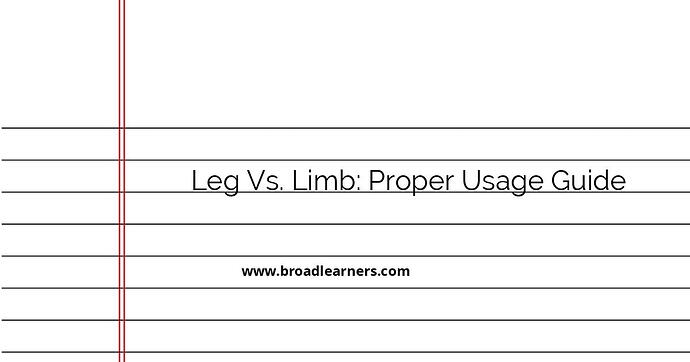Understanding the difference between 'leg' and 'limb' is essential for using these terms correctly in English. While both words refer to parts of the body, there are specific guidelines for their usage that can help avoid confusion. Let's explore the proper usage of 'leg' and 'limb' in detail:
- Leg: The word 'leg' specifically refers to the lower limb of the body, from the hip to the foot. It is used to describe the part of the body that supports standing, walking, and running.
- Limb: On the other hand, the term 'limb' is more general and encompasses all body parts that extend from the torso, including arms, legs, hands, and feet.
Let's look at some examples to understand the proper usage of 'leg' and 'limb':
1. Leg:
When referring to the specific lower limb of the body, you would use 'leg.' For example:
- She injured her leg while running.
- He crossed his legs while sitting on the chair.
2. Limb:
For a more general reference to any body part that extends from the torso, 'limb' would be the appropriate term. For instance:
- The monkey used its limbs to swing from branch to branch.
- The accident left him with injuries to multiple limbs.
By adhering to these guidelines, you can effectively distinguish between 'leg' and 'limb' and use them accurately in your written and spoken communication.
Did I miss anything? Respond below
